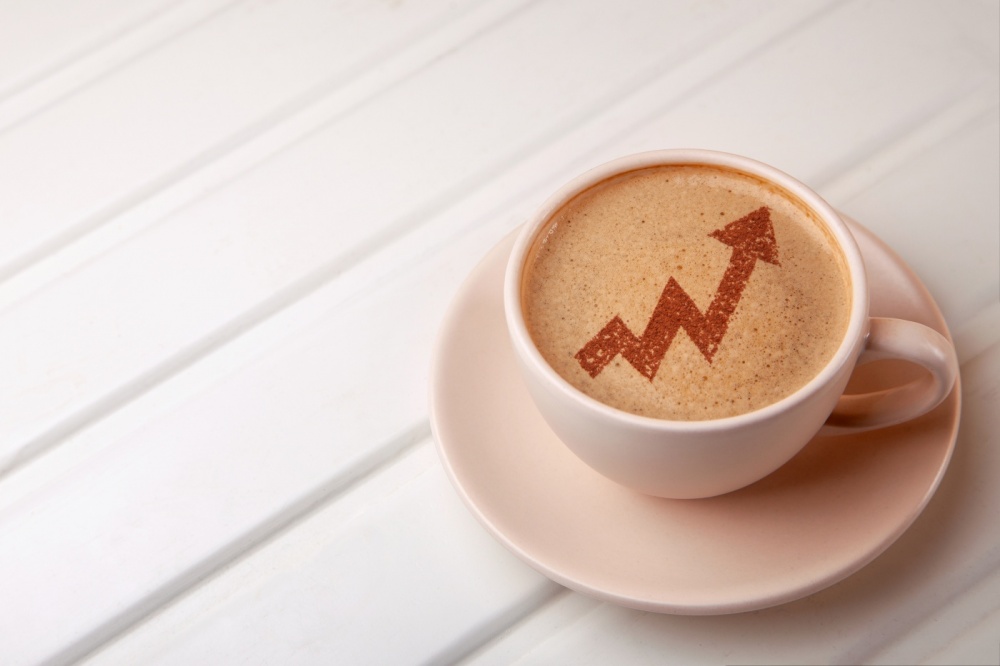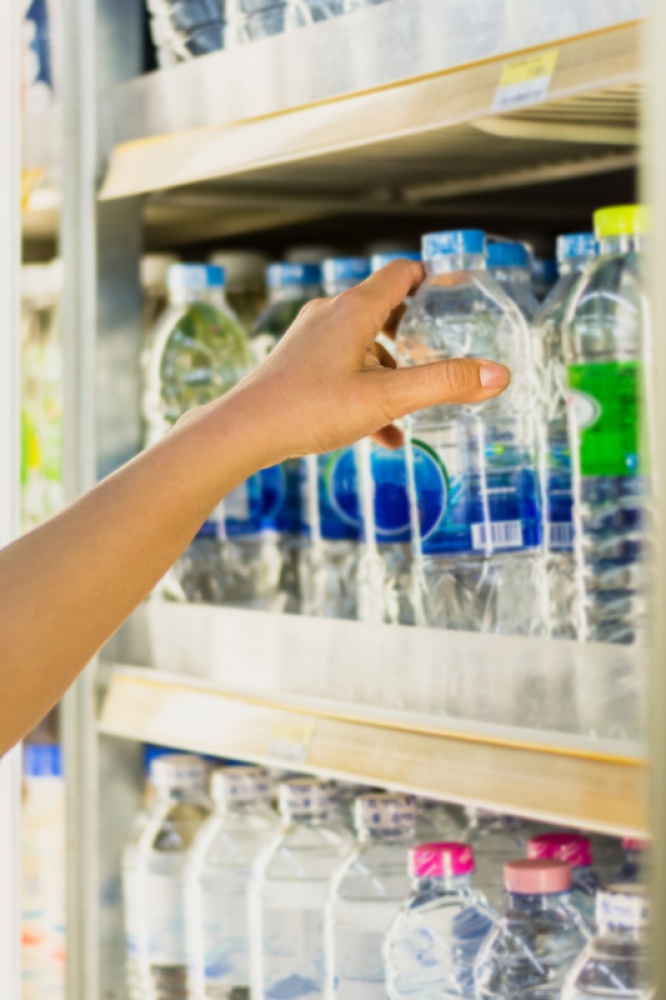What does it take to successfully scale your beverage?

Insider insights and advice from beverage industry veteran and brand growth expert, Vanessa Walker.
It’s not every day that you get the opportunity to talk shop with someone who has Vanessa Walker’s breadth and depth of beverage experience. From holding leadership roles at huge brands like CELSIUS and LaCroix to growing a beverage start-up from $800k to $100m in under five years, Vanessa has tackled ambitious goals for some of the nation’s most reputable brands. In this interview, she shares what she’s learned on her journey as well as her take on the challenges and opportunities on the horizon for beverage leaders.
Q: Your background includes a broad range of experiences, including time at Target as well as leadership positions with successful startups and turnaround brands like LaCroix and CELSIUS. What is one lesson that’s carried over across your career?
Over the course of my beverage career, I’ve learned the path to growth is not just in selling the brand, but rather in selling the category. Focusing on category growth makes you valuable to the buyer. If the category isn’t expanding, and the shelf space isn’t there, you can continue to add SKUs in your lineup, but you won’t have the space to grow at retail. When I started with LaCroix in 2008, a vast majority of retailers across the United States did not have a sparkling water set. We created opportunities by promoting the notion of the category. At CELSIUS, it was a similar situation as we advocated expansion outside of the pharmacy aisle for a liquid dietary supplement. We focused on creating space for a transition from a calorie-burning beverage into a contemporary healthy energy segment. A strong category means more opportunity for your brand to thrive.
Q: What is a misconception you see out there in the beverage industry?
The brands that recognize and value industry expertise tend to move more quickly and efficiently than those who don’t.
I still see many people determined to launch an innovative brand and reinvent the beverage industry process as they do so. The beverage industry is its own animal with its own rules, and the competitors are mighty. When you watch the Super Bowl, all of the commercials are food, car, or beverage commercials. Those are the industries with the biggest brands and the biggest budgets in the world. The competition is fierce, and the inner workings of the beverage industry are complex. Unless you have first-hand experience with things like bill-backs, chargebacks, distributor contracts and incentive programs, you’re in danger of wasting time and money trying things that might work in another industry but won’t move the needle when it comes to results in beverage. There is no substitute for experience. The brands that recognize and value industry expertise tend to move more quickly and efficiently than those who don’t.
Q: What are the biggest challenges beverage companies face right now?
Buyer turnover is one of the challenges beverage brands are facing. It’s one thing to sell an account once but having to resell accounts you’ve landed over and over is costly.
Distribution is another challenging area for beverage companies today. There are more options now than ever across various channels. It’s difficult to navigate which distribution partners to choose. The goal is to lay out a cohesive route to market that will make all of your partners successful. That is not an easy task. The word hybrid is often overused, and I think it oversimplifies the challenge of creating a strategy that keeps your distribution partners on board even when they see that your brand is in another system or going direct to consumers. It’s an area brands can’t afford to approach blindly because without clarity and strategy, they could be signing contracts with parties that will have long-term ramifications on their pricing structure, potentially leading them to be less successful at retail.
Q: What do successful brands get right that others miss in the process of growth and commercialization?
In addition to valuing expertise and focusing on category growth, successful brands understand timing. It typically takes three selling cycles to grow a brand at retail nationwide. You are basically playing chess on a big invisible board. You have to grasp what role your brand plays in the category. If you don’t get that, you won’t make it long-term. Understanding timing - knowing when to be patient and when to make your move - is what separates the one-hit wonders from the pros. Some corporate planning cycles are 10 years. When you have a large competitor in a category planning and envisioning their success 10 years from now, building the product, portfolios, packaging, and pipelines, the idea that you’re going to hop in quickly and disrupt everything in 12 months – that almost never happens. I won’t say it hasn’t happened, but it’s an “almost never” situation. Stay the course. Be focused and wait to invest major marketing dollars until you’ve adequately seeded the shelves.
Q: What are some of the stumbling blocks you see brands or beverage marketers running into?
 Many people today are too disconnected from the consumer’s lifestyle. They run to digital or influencers first. We are in the beverage industry and beverages have to be tasted. They have to be smelled. They have to be cold, and they have to be available when you’re thirsty. These are simple concepts that take years to perfect. Being available when I’m thirsty means it was there, on the shelf, or refrigerated when I was ready. When the right person (target audience) reached for the beverage it was there. It tasted right, and it looked the part at the right location, for the right price. All of those things coming together is not easy.
Many people today are too disconnected from the consumer’s lifestyle. They run to digital or influencers first. We are in the beverage industry and beverages have to be tasted. They have to be smelled. They have to be cold, and they have to be available when you’re thirsty. These are simple concepts that take years to perfect. Being available when I’m thirsty means it was there, on the shelf, or refrigerated when I was ready. When the right person (target audience) reached for the beverage it was there. It tasted right, and it looked the part at the right location, for the right price. All of those things coming together is not easy.
When I hear an executive asking about traffic to a website, I am frightened because we are not drinking our websites. I can only learn so much about how the brand makes me feel and how I’m going to relate to it by viewing the website. Often times, the dollars are flowing in the wrong direction when they’re going to digital before being invested in the smell, taste, experience, and arm’s-length distribution of the beverage. I think the trap that marketers are falling into is focusing on likes and influencers. That isn’t the key to growing a nation-wide best-selling beverage. If a million people buy your beverage only once, it’s not sustainable. You need to have an audience of around 3.5 million consumers a year drinking about a case of month to have a brand that is even really playing ball. Having 3.5 million people sounds doable, but it’s not so easy because you have to be ingratiated into their lifestyle. A billboard with a can on it or a video with someone dancing around with your beverage isn’t going to garner a sustained audience of 3.5 million regular, loyal consumers who are putting your brand in their cart every month.
Q: What are the key elements that make a go-to-market strategy successful?
There are many, but if I was going to focus on one thing, it would be the basics. Have an appealing package with a product positioned to appeal to the masses and an easy to understand message. Surround your product with a smart pricing and promotional strategy and make sure it tastes great. That’s the go-to-market strategy, however, some people refuse to wrap their minds around simplicity because they are focused on a single ingredient or a single platform, or a niche, targeted consumer. At the end of the day, your beverage still has to taste great and fire on all cylinders. It comes back to the basics.
Q: In the evolving world of beverage brand strategy and marketing, what things have stayed the same and what things are changing?
Remaining true? You need to win at retail first. What’s changing? The speed and quantity of the newcomers. Even though many won’t last, the stream of new entrants into the most popular, on-trend beverage segment (like sparkling waters) is disrupting the flow of everything. New players come into a category and want to gain trial, but they don’t know what to do. They fire sale themselves with buy-one-get-one or flood the shelves with shock-value retails. That upsets the pricing structure until they run out of funding and exit stage-left, then pricing becomes normal again. So, what’s changing is the speed of change and number of new entrants.
Whatever you think it will take, multiply that by three.
Q: What is the biggest piece of advice you have for beverage entrepreneurs?
Here’s my advice: Whatever you think it will take, multiply that by three. Whatever you think your budget is or your timeline is, put a times three by it and that’s what it’s really going to take.
